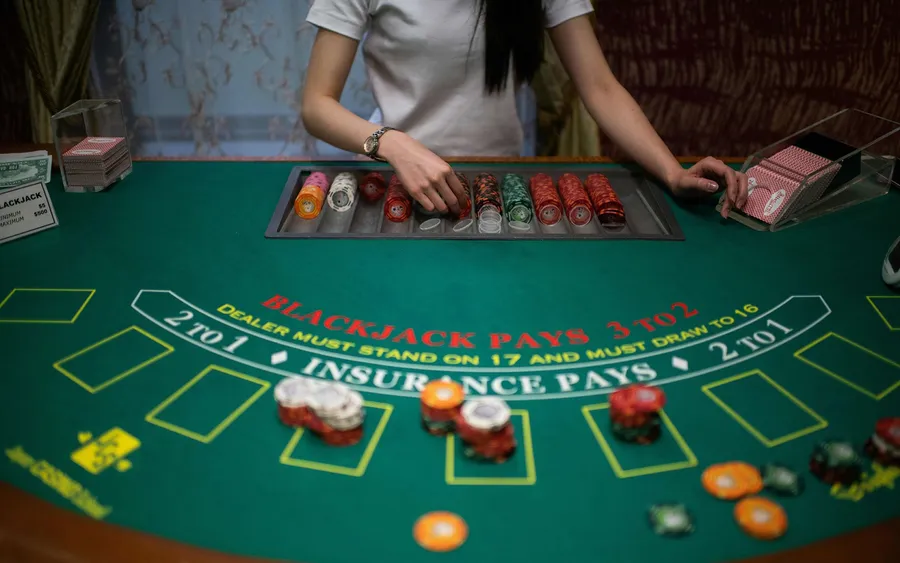There is always a built-in advantage for the house for any casino games including Blackjack. This is known as the “house edge.” Understanding what the house edge is, how it works, and how you can minimize it is essential for boosting your odds and keeping your bankroll intact. Ready to dive in? Let’s break it down in a way that’s both informative and fun!
Table of Contents
ToggleWhat is the House Edge in Blackjack?
In simple terms, the house edge refers to the statistical advantage that the casino has over players. This ensures that over a long period of time, the casino will make a profit. In blackjack, the house edge is relatively low compared to other casino games, which is why it attracts players who want a fair shot at winning.
For example, in a standard game of blackjack with basic rules and optimal player strategy, the house edge is typically around 0.5% to 1%. This indicates that the casino gets to keep $0.50 to $1 for every $100 you wager. While this might not sound like much, it can add up over time, especially if you’re playing for long sessions or at higher stakes.

Things that Can Influence the House Edge in Blackjack
The house edge isn’t static; it can vary based on different factors. Here are some key elements that can influence the house edge and impact your game:
1. Number of Decks Used
The number of decks in play can significantly impact the house edge. Most casinos use multiple decks to make card counting more difficult, which in turn increases the house edge. Why? Because with more cards in play, the chance of predicting what’s coming next gets trickier.
- Single-deck Blackjack: Typically offers a lower house edge, around 0.15%.
- Six or Eight-deck Blackjack: The house edge rises to approximately 0.5% or more.
Pro tip: If you can find a table that uses fewer decks, grab a seat! Because your chances will get better as you play longer.

2. Blackjack Payout Rules
The standard payout is 3:2, but some casinos offer 6:5 or even 1:1, which tilts the house edge further in their favor. Think of it like this: if you’re betting $10, a 3:2 payout gives you $15 for a blackjack, while a 6:5 payout only gives you $12. That difference adds up!
- 3:2 Payout: House edge stays at around 0.5%.
- 6:5 Payout: House edge jumps up to 1.45%.
If you come across a table that offers a 6:5 payout, consider walking past it. Your wallet will thank you later.
3. Dealer Rules for Hitting on Soft 17
Whether the dealer must hit or stand on a soft 17 (a hand containing an Ace counted as 11) also changes the game dynamics. This rule might seem small, but it can have a noticeable effect.
- Dealer Stands on Soft 17: Lowers the house edge.
- Dealer Hits on Soft 17: Adds about 0.22% to the house edge.
When the dealer hits on a soft 17, they have a better chance of improving their hand. This might mean more losing hands for you.
Strategies to Minimize the House Edge
Now that we understand what influences the house edge, let’s dive into practical strategies you can use to keep it as low as possible. Because who doesn’t want to maximize their odds, right?
1. Learn and Use Basic Strategy
Basic strategy in blackjack involves making the statistically optimal decision for every hand dealt to you. You can reduce the house edge to a minimum of 0.5% just by simply using the basic strategy. This means sticking to the playbook, even when your gut might tell you to do otherwise.
Think of it like this: basic strategy is your roadmap to making the best decision in any given scenario. It takes the guesswork out and puts the math on your side. Sure, it’s not as dramatic as going rogue and hitting on a 16 against a dealer’s 10, but it’s a lot smarter!

2. Choose Games with Favorable Rules
Not all blackjack tables are created equal. Some offer better rules that can work to your advantage. Here’s what to look for:
- 3:2 blackjack payouts
- Dealers that stand on soft 17
- The ability to double down after splitting
- Early surrender options
These subtle rule variations can shave off small percentages from the house edge, giving you a bit more room to breathe.
3. Avoid Side Bets
Side bets, like “insurance” or “pair” bets, might seem exciting, but they come with a much higher house edge. For instance, the insurance bet can carry a house edge of 7% or more—a figure that will drain your bankroll quickly. Side bets are like the flashy neon signs on the Vegas strip: eye-catching but often a bad idea.
Card Counting: Does It Really Work?
Card counting is one of the most famous methods for reducing the house edge in blackjack, and for good reason. When executed correctly, card counting can swing the advantage slightly in your favor. However, keep in mind that casinos actively look for card counters, and using this strategy can lead to being asked to leave or banned from the premises.
Card counting involves keeping a mental tally of the cards that have been dealt to determine whether the remaining deck is rich in high or low cards. If it’s rich in high cards, the player has a better chance of getting a natural blackjack.
Sounds complicated? It can be, especially in a busy casino with distractions. But for those willing to practice and master it, the rewards can be worth it.
Final Thoughts
While the house edge ensures that the casino has an advantage, understanding how it works and applying strategies to reduce it can make a significant difference in your blackjack experience. By employing basic strategy, choosing favorable rules, and managing your bankroll effectively, you can minimize the house edge and enjoy more extended, profitable gaming sessions.
Remember, blackjack is a game of skill and knowledge, so arm yourself with the right strategies to keep that house edge in check! And hey, even if the dealer wins this round, there’s always the next one to look forward to. Shuffle up and deal!





